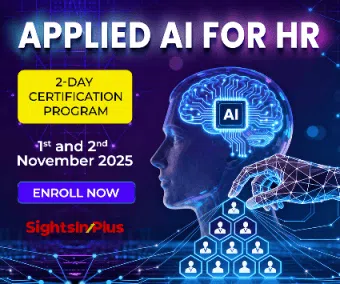Intel Corporation has officially spun off its AI-powered robotics and biometric division into a standalone company named RealSense.
The announcement follows 500 job cuts, affecting 15–20% of Intel’s factory workforce, as the chipmaker restructures to regain footing in the competitive AI landscape.
Nadav Orbach, formerly Intel’s VP for incubation and disruptive innovation, will lead RealSense as CEO.
In an interview with CNBC, Nadav declared, “The timing is now for physical AI,” emphasizing the growing demand for robotics solutions that integrate real-time perception and autonomous decision-making.
$50 Million Series A Funding Fuels Expansion
RealSense has secured $50 million in Series A funding, led by MediaTek Innovation Fund and Intel Capital, which is also being spun out from Intel.
The capital will be used to:
- Develop new product lines
- Scale manufacturing operations
- Expand global go-to-market efforts
- Advance AI software and depth camera R&D
Intel retains a minority stake, maintaining strategic ties while granting RealSense operational independence.
Intel RealSense’s Vision Tech Powers 60% of Global Robotics
RealSense specializes in 3D vision systems and depth cameras that enable machines to perceive and interact with their environments.
Its newest product, the D555 camera, features built-in AI capabilities and single-cable data/power transmission, enhancing usability for robotics and security systems.
The company claims its technology is embedded in 60% of the world’s autonomous mobile robots and humanoids, with clients including Unitree Robotics and ANYbotics.
RealSense also serves over 3,000 active customers and holds 80+ patents, positioning itself as a critical infrastructure provider in the robotics ecosystem.
Intel’s Strategic Retreat and Industry Context
Intel’s decision to spin off RealSense follows a series of cost-cutting measures, including the sale of its stake in Altera and the ousting of CEO Pat Gelsinger.
The company has struggled to match the rapid advancements of AI leaders like Nvidia, Tesla, and Amazon.
These competitors are making significant investments in robotics and automation.
Morgan Stanley projects that the humanoid robot market could grow to $5 trillion by 2050. RealSense plans to tap into this explosive growth as part of its long-term strategy.
Nadav noted that independence allows the company to “move faster and innovate more boldly” in response to shifting market dynamics.
Future Outlook for RealSense by Intel: Safety, Simplicity, and Scale
RealSense plans to focus on building safe, user-friendly robotics tools and expanding into biometric security systems.
RealSense operates across the U.S., Israel, and China, with manufacturing hubs located in Asia.
These global footprints position the company to emerge as a leading force in physical AI.
Nadav hinted at potential IPO or acquisition opportunities, but emphasized long-term growth and ecosystem development as the company’s immediate priorities.
Note: We are also on WhatsApp, LinkedIn, Google News, and YouTube, to get the latest news updates. Subscribe to our Channels. WhatsApp– Click Here, Google News– Click Here, YouTube – Click Here, and LinkedIn– Click Here.



